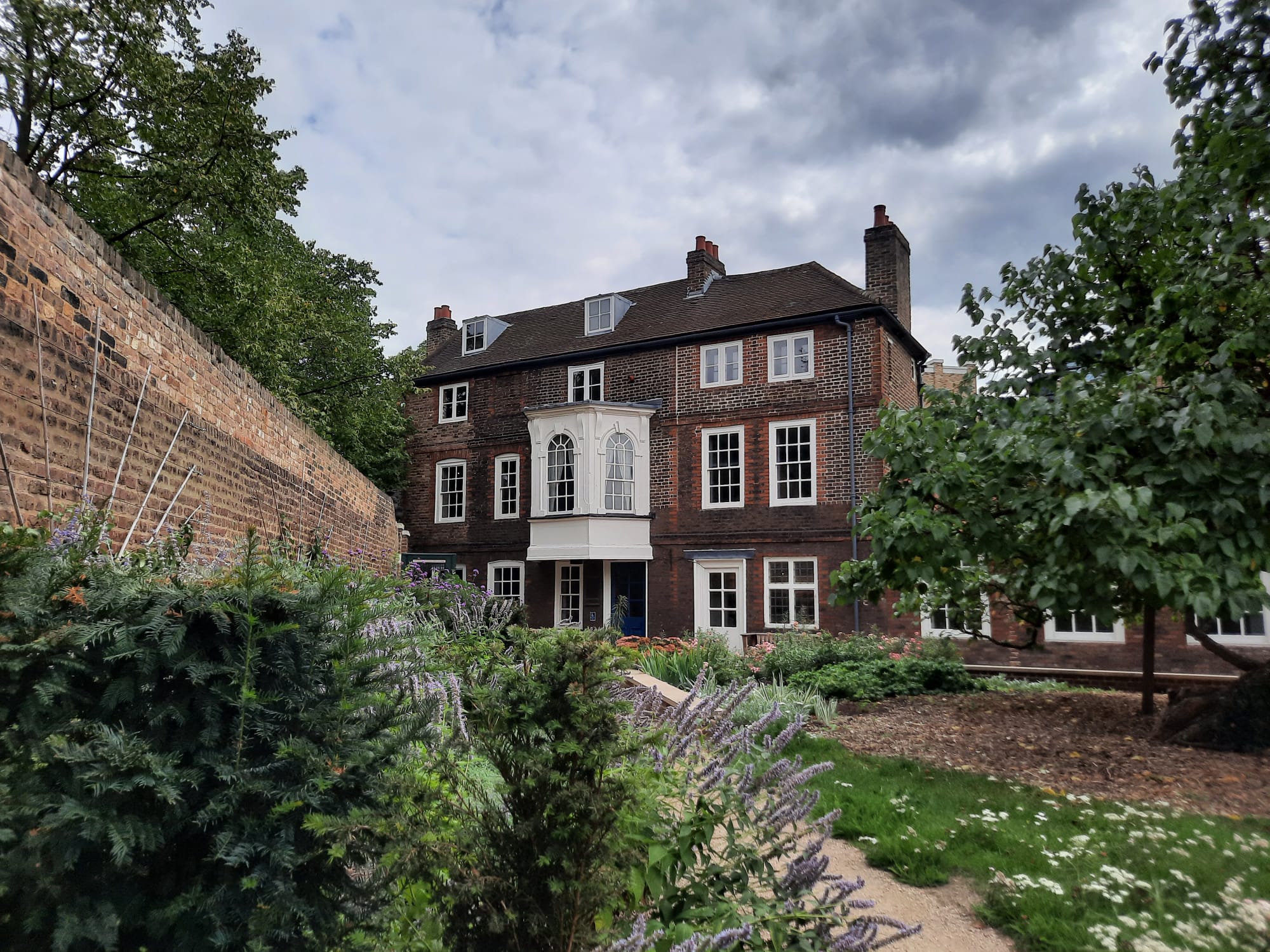Hogarth’s House
A visit to Hogarth’s House in Chiswick highlights, perhaps better than any other historic site I’ve been to, the stark difference between how historic figures experienced London and its environs vs. how we do today.
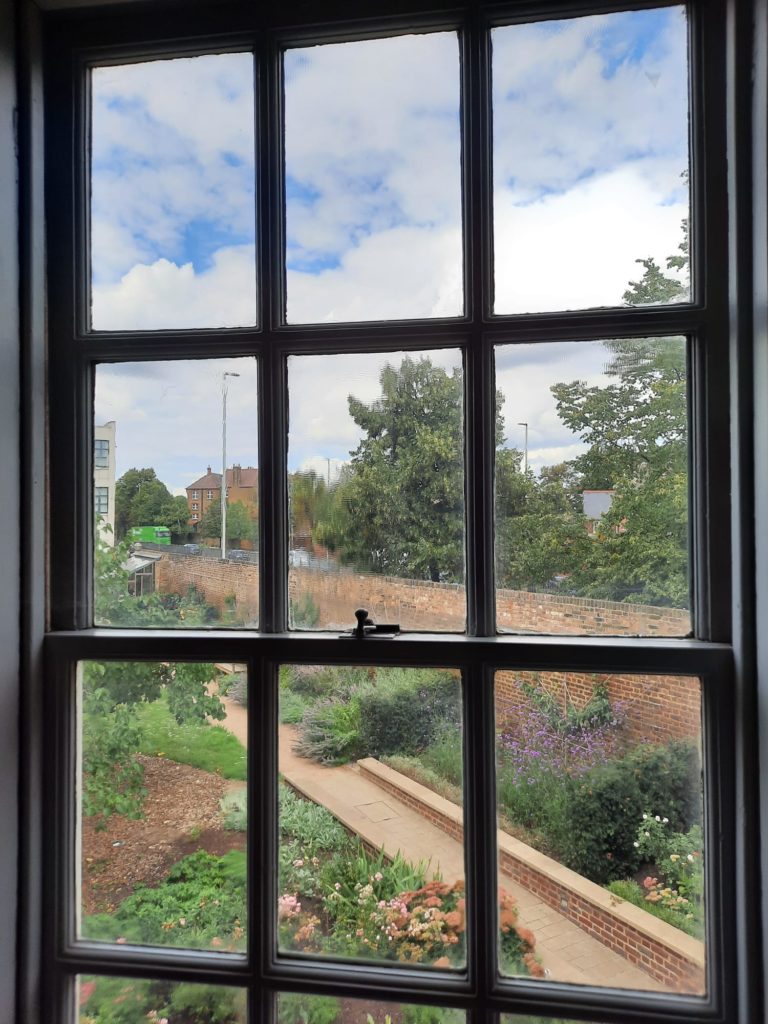
A Visit To Chiswick
It’s funny. The reason I knew that Hogarth’s House was a visitor attraction in West London was because I’ve seen signs for it when on my way to or from Heathrow. I look out for it somewhere around the Fuller’s Brewery and always make a mental note to go and see it one day. Yet when the day finally came where I was at a loose end and decided to head out to Chiswick, I was somehow astonished by just how much of an impact industry and infrastructure like the brewery and the motorway have had on the area.
I did a walk around various historic sites in Chiswick which is coming soon, but the only one that I stopped to visit (and the first point of interest on the walk) was Hogarth’s House. You’ve heard me talk about William Hogarth before. An 18th Century painter, we’ve seen his work on display at Pitzhanger Manor and Sir John Soane’s Museum, as well as an exhibition at Tate Britain which I didn’t particularly enjoy for various reasons. He was also a notable public figure in his day, and supported causes like the Foundling Hospital.
In Hogarth’s day, Chiswick wasn’t London. It certainly wasn’t the last stop on the way to the airport. It was a nice village way out in the countryside. A retreat from the hustle and bustle of the city. I want to take you through the history of the house in more detail now – how it was used by Hogarth and his family and what has happened to it since. This little house tells many stories: of a famous figure from history, of urban expansion, of damage through neglect and war, of different attitudes to historic preservation. Without further ado, then, let’s take a look.
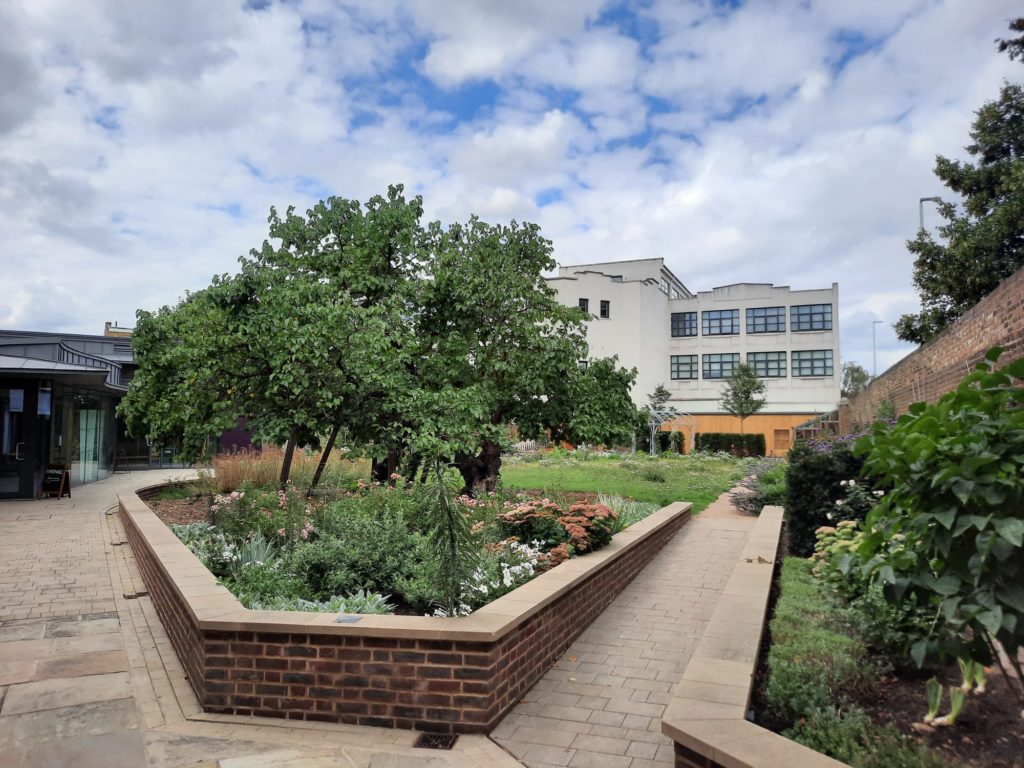
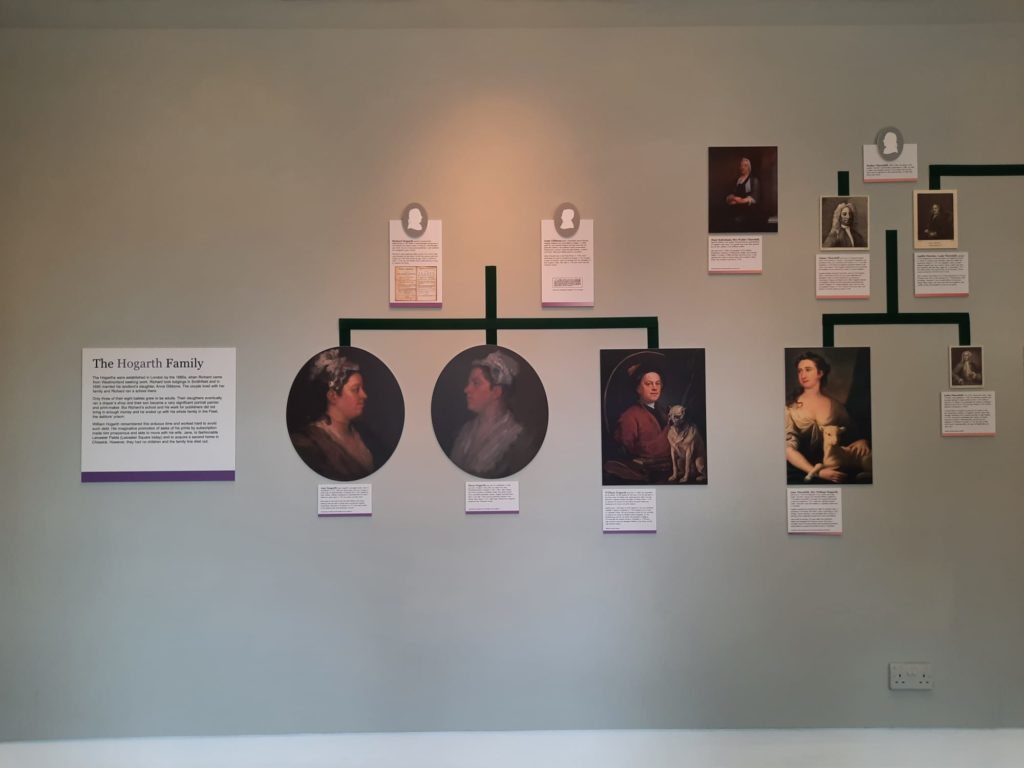
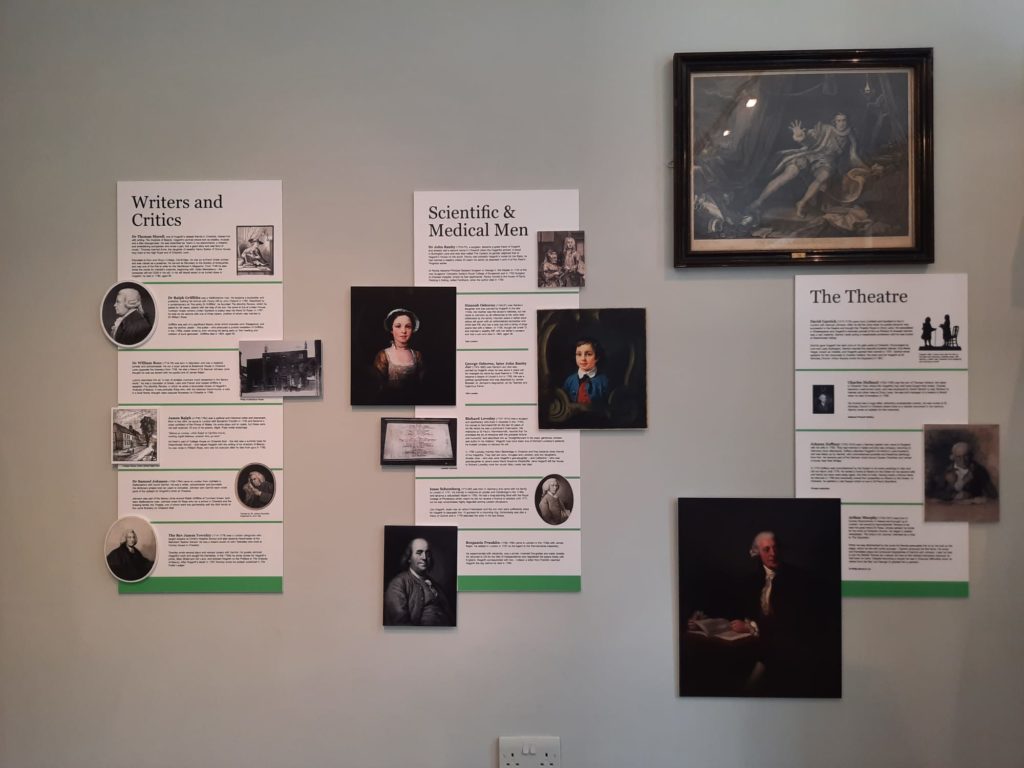
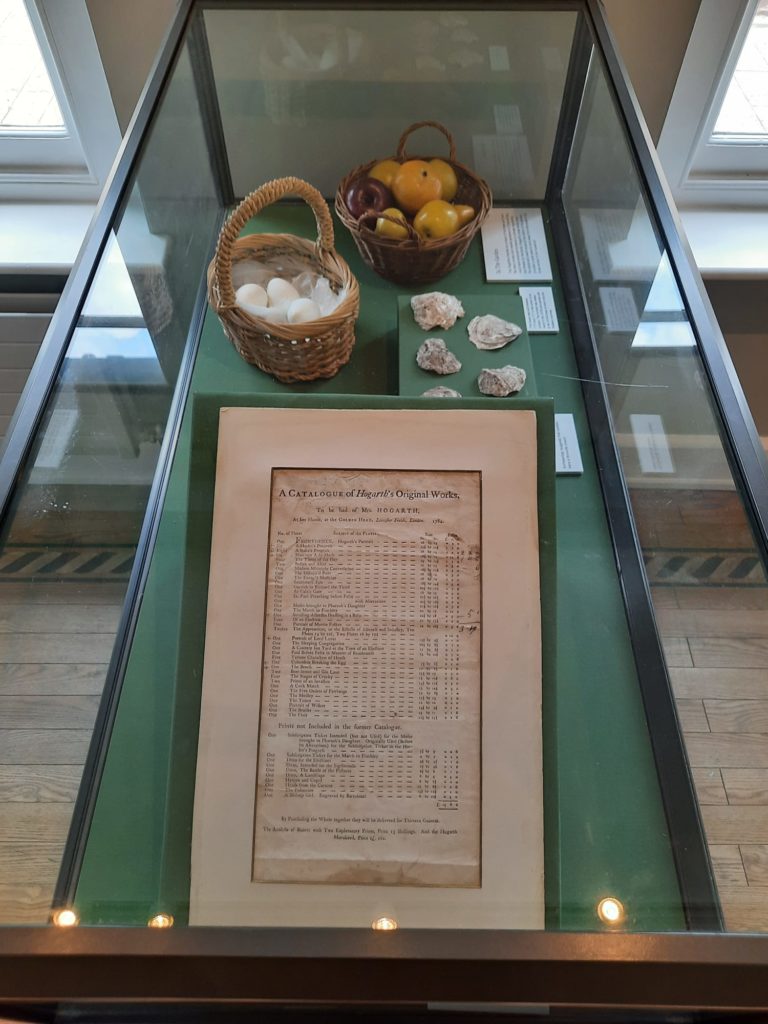
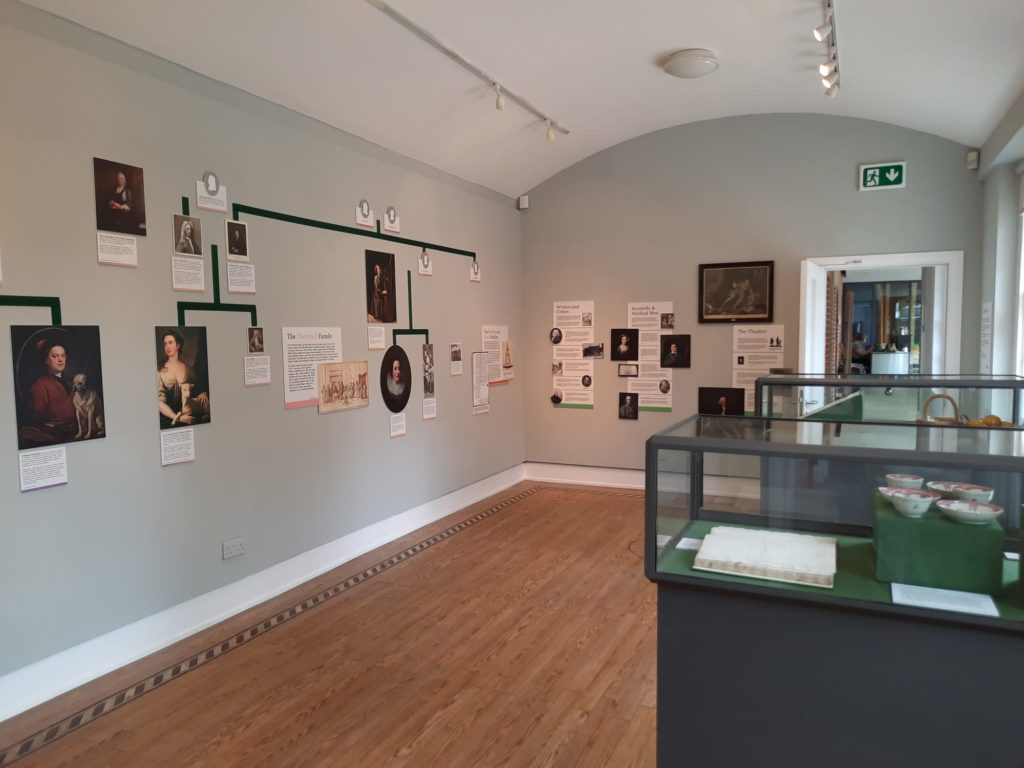
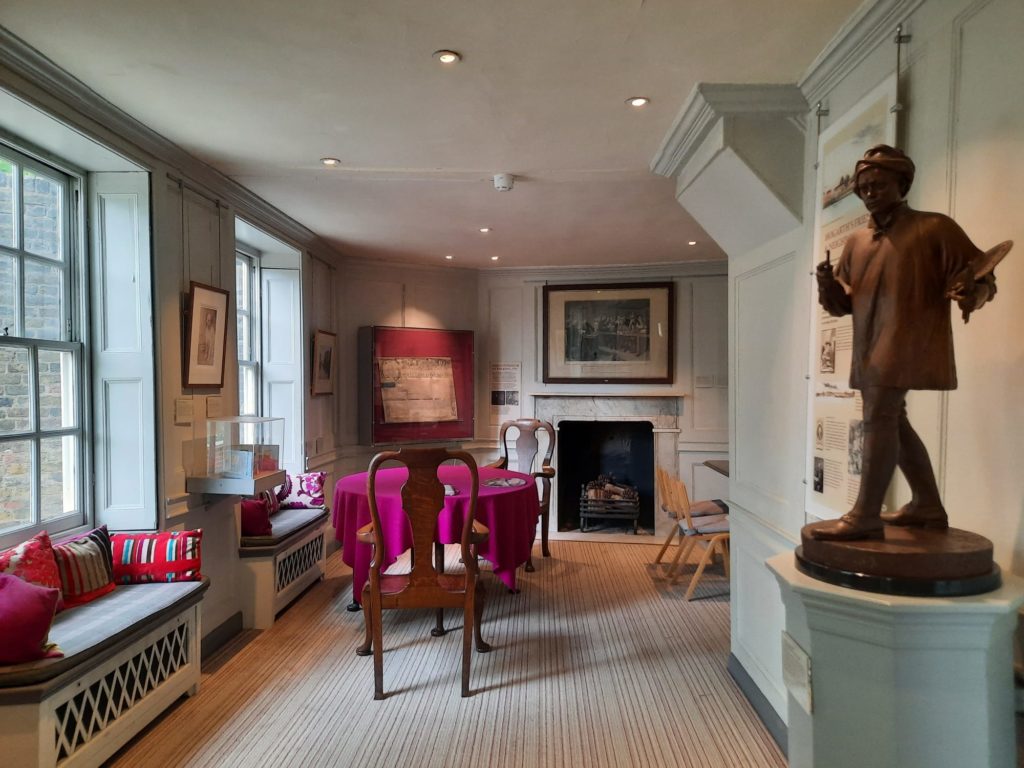
Hogarth’s House
The house now known as Hogarth’s House is built on land enclosed from Chiswick Common Field in the 1670s. The house itself dates to 1713-17. It was fairly modest: three stories of two rooms each with a central staircase. The Hogarths took it on in 1749 and extended it by one room on each floor. The join is still visible today. William Hogarth, born in 1695, was then in his fifties. He married his wife Jane in 1729 without the consent of her father, Sir James Thornhill. The family drama didn’t last too long though, and Jane’s mother lived with them for a time including in Chiswick. Jane also lived 25 years after William’s death, and maintained and further enlarged the house at Chiswick during that time.
For William and Jane Hogarth, this house in Chiswick was a country retreat. They had an orchard in the garden. Contemporary sketches of the surrounding area show peaceful vistas of fields in all directions. The Hogarths had friends in Chiswick already, and made more after moving in. William was also able to supervise local placements of children from the Foundling Hospital, including with wet nurses. The Hogarths did not have children of their own, but brought around six servants with them so it was still a sizeable household. After Jane’s death, her cousin Mary Lewis inherited it. Later it was sold and changed hands several times. Owners included Newton Treen Hicks, an actor in Victorian melodramas.
The house became quite run down, and was in multiple occupancy for a period. At the turn of the 20th Century there was talk of demolishing it. A campaign by artists and writers to save it failed to raise enough money, but Lieutenant-Colonel Shipway of Grove House, Chiswick, stepped in, purchased it, restored it and set it up as a museum, and then turned it over to the local council. It opened as a museum in 1904.
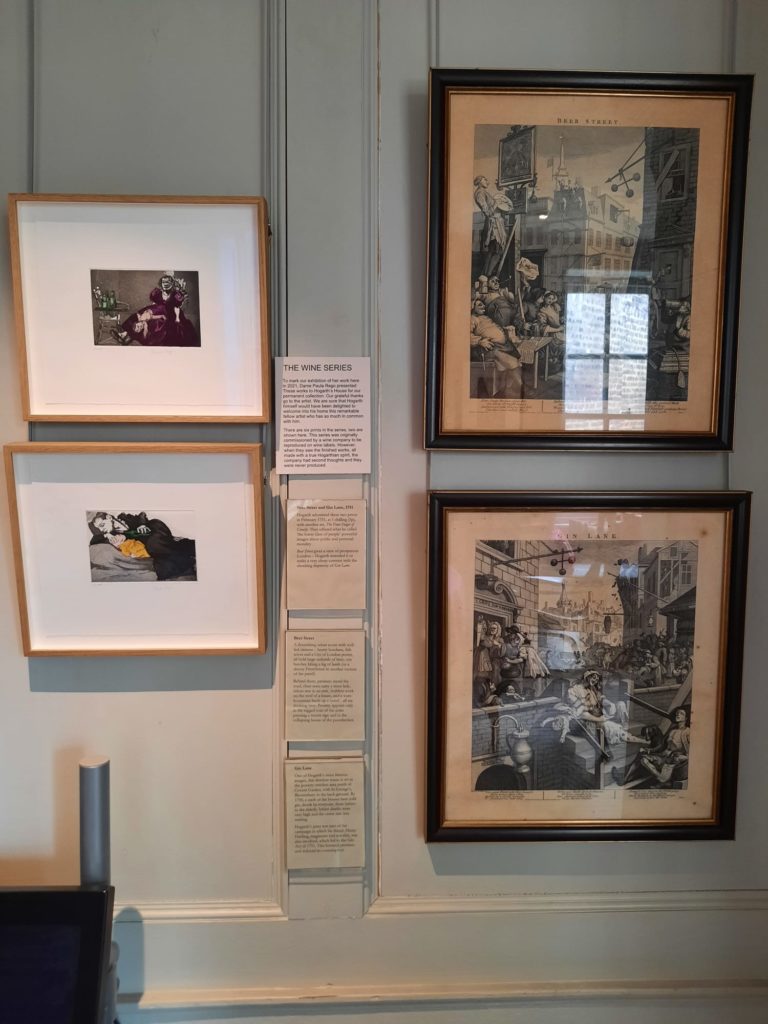
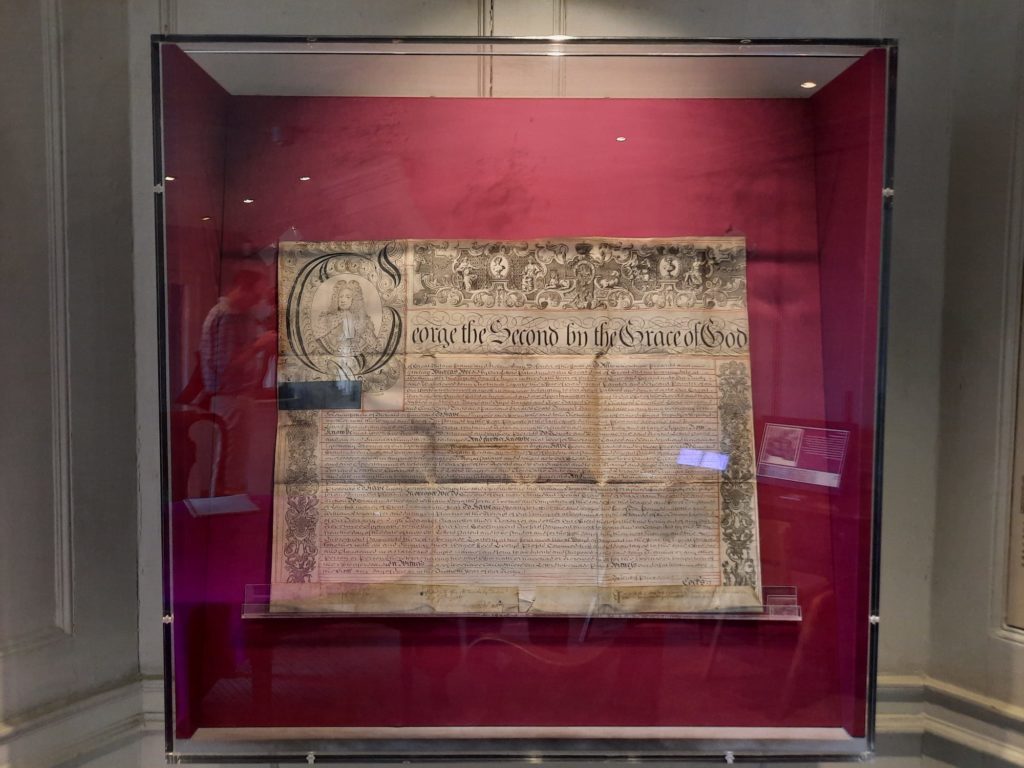
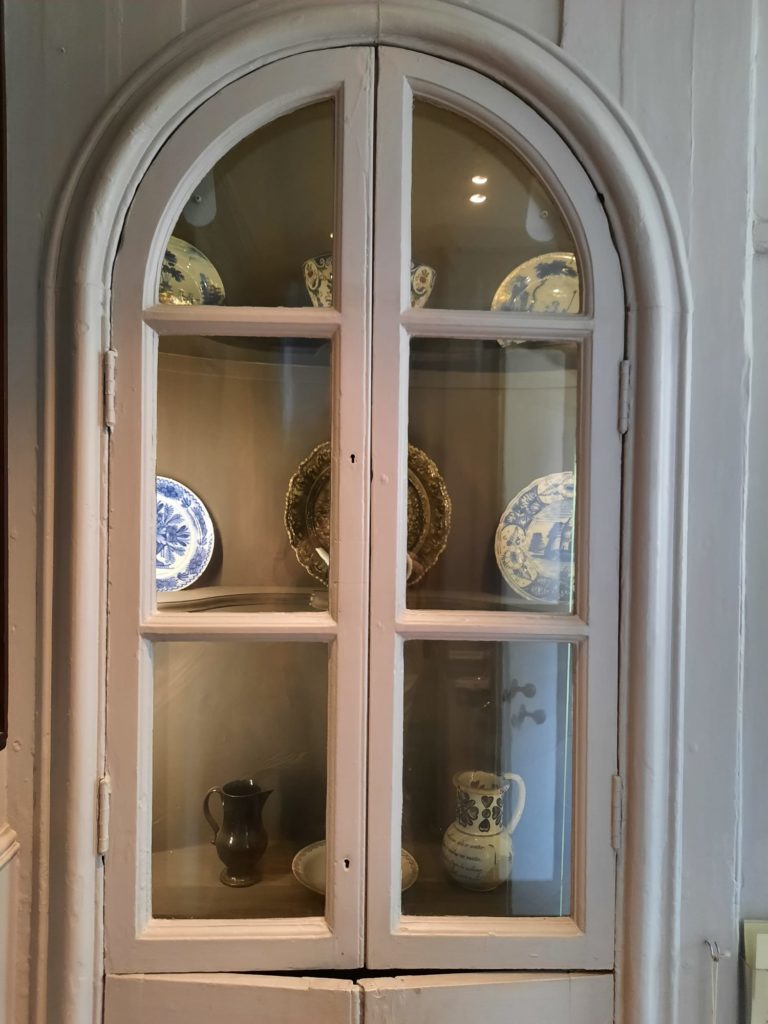
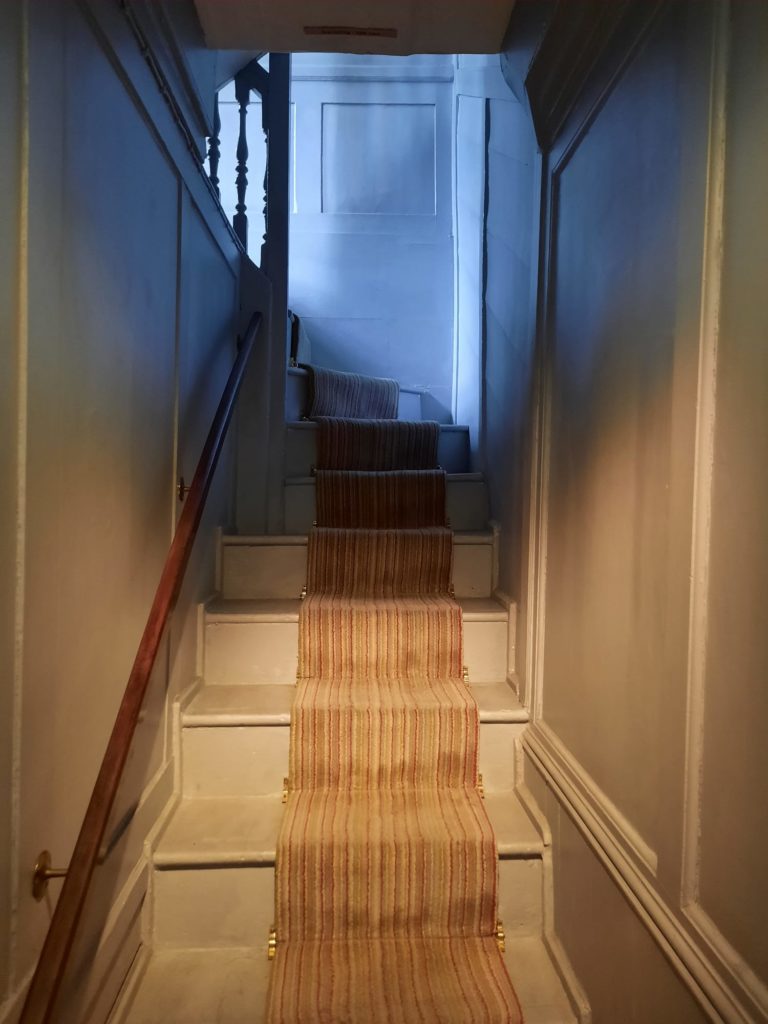
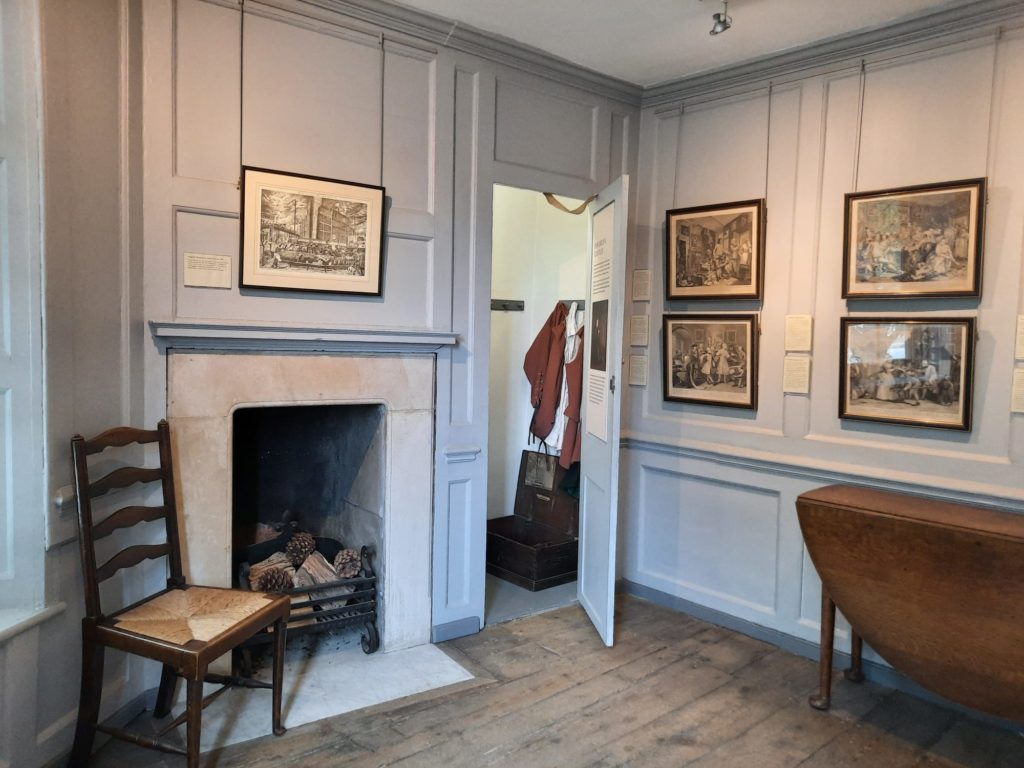
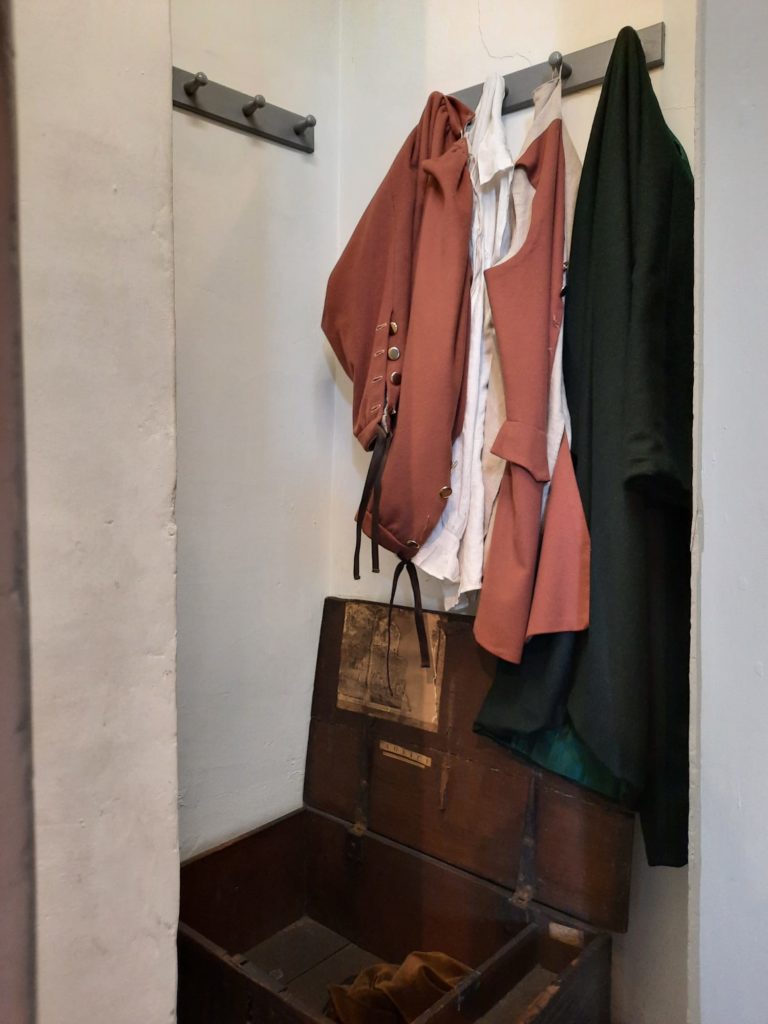
A House Of Varied Fortunes
So an early 18th Century house, owned and expanded by a famous artist, passing through various hands, and then becoming a museum. Through all those years of various ownership the house never lost its connection with Hogarth – even when it was a multi-family dwelling interested people would pay a small sum to look around.
Like many other historic properties, however, this lack of continuity in ownership means that there is not a large collection of objects original to the house. Part of Lieutenant-Colonel Shipway’s contribution was to buy Hogarth prints to display, and commission replica furniture, for instance seats with rush matting. Acquisitions and commissions have continued, but today there are still very few items which actually belonged to Hogarth and his household. We saw a few such things on display downstairs, but mostly saw other items of the period, archaeological discoveries from the property, modern replica objects (eg. Hogarth’s clothes hanging in a cupboard) and contemporary art with a link to Hogarth, including some works donated by Paula Rego.
Rather than being object-led, then, Hogarth’s House focuses on interpretation. There are a lot of information panels, which tell various stories. There is the story of Hogarth and his life. The story of his household and their time living here. The story of the house before and after Hogarth, including 20th Century chapters like WWII damage and restoration. And so on. There’s a lot of reading and a lot to piece together, but generally it’s interesting.
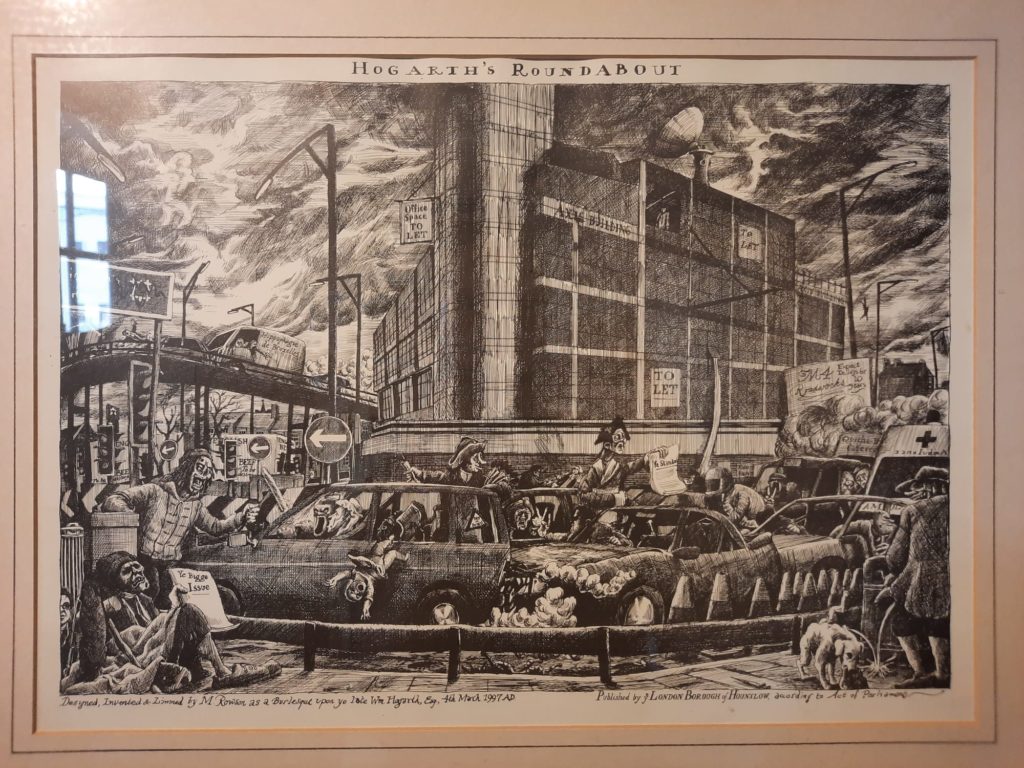
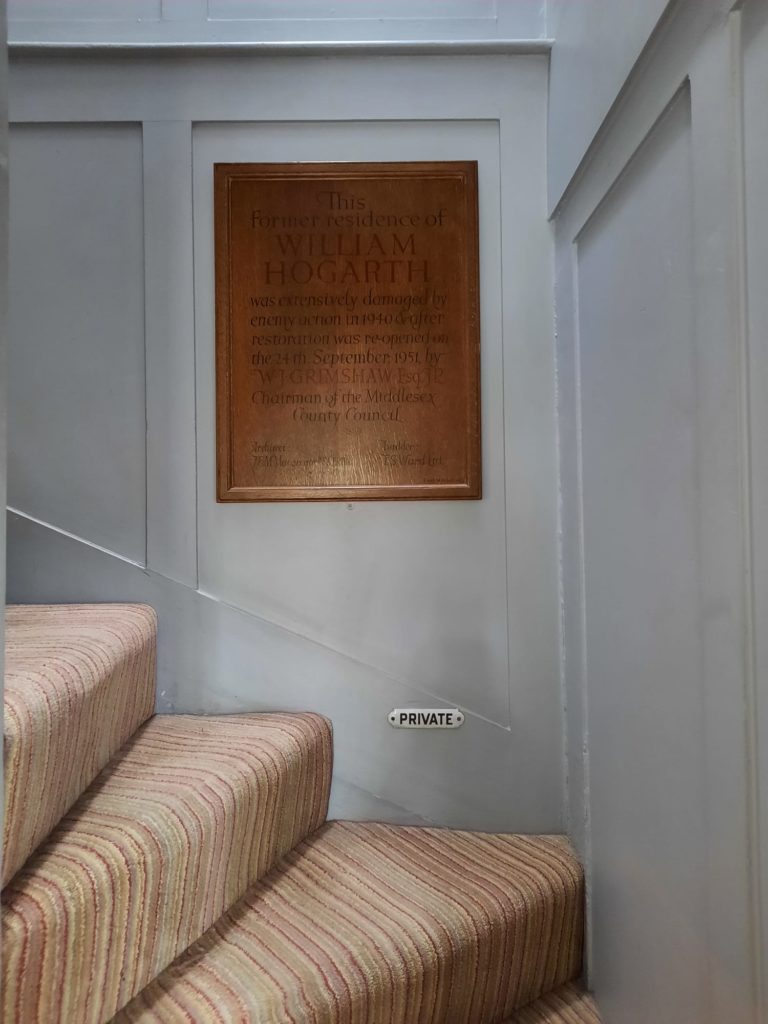

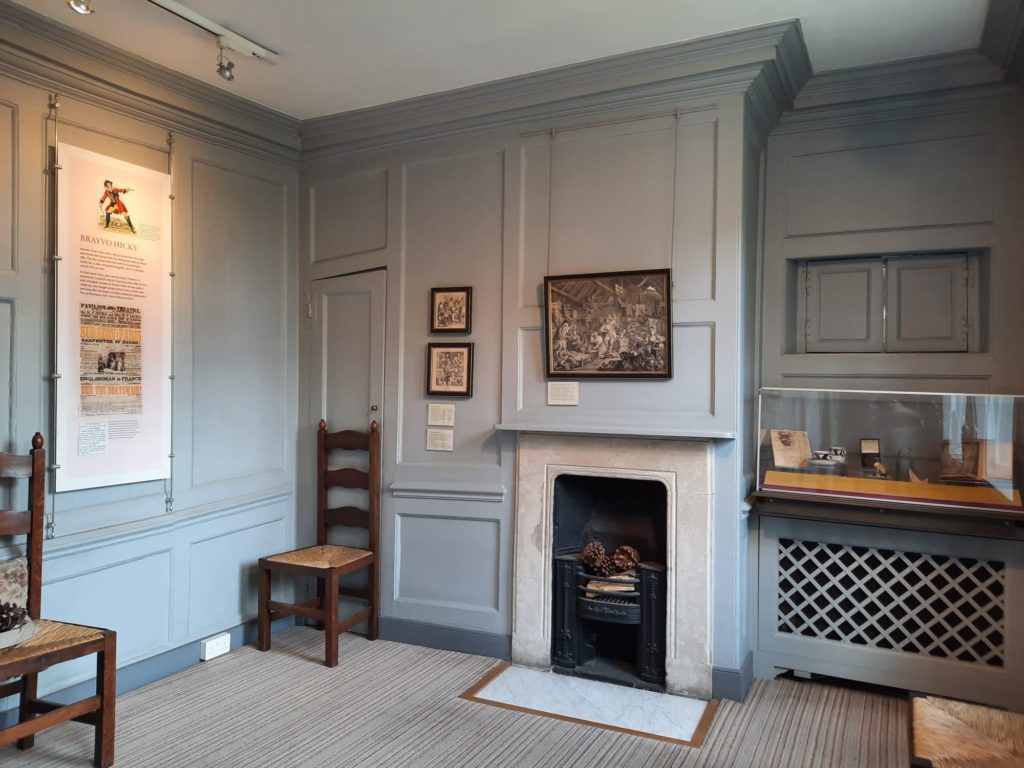
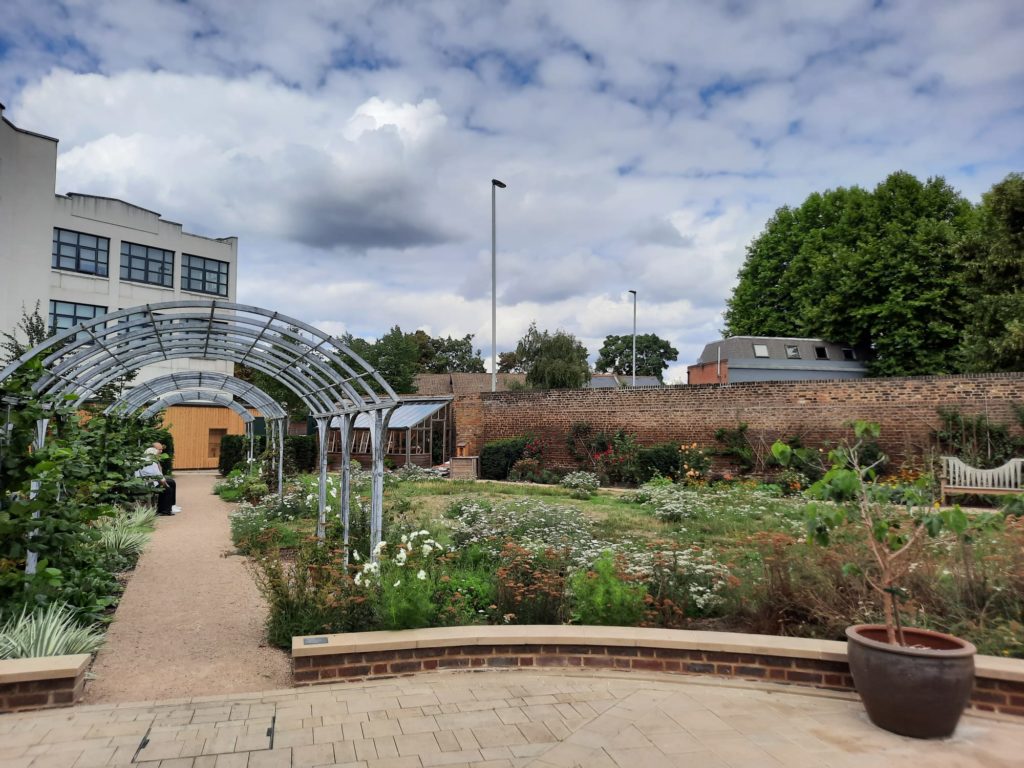
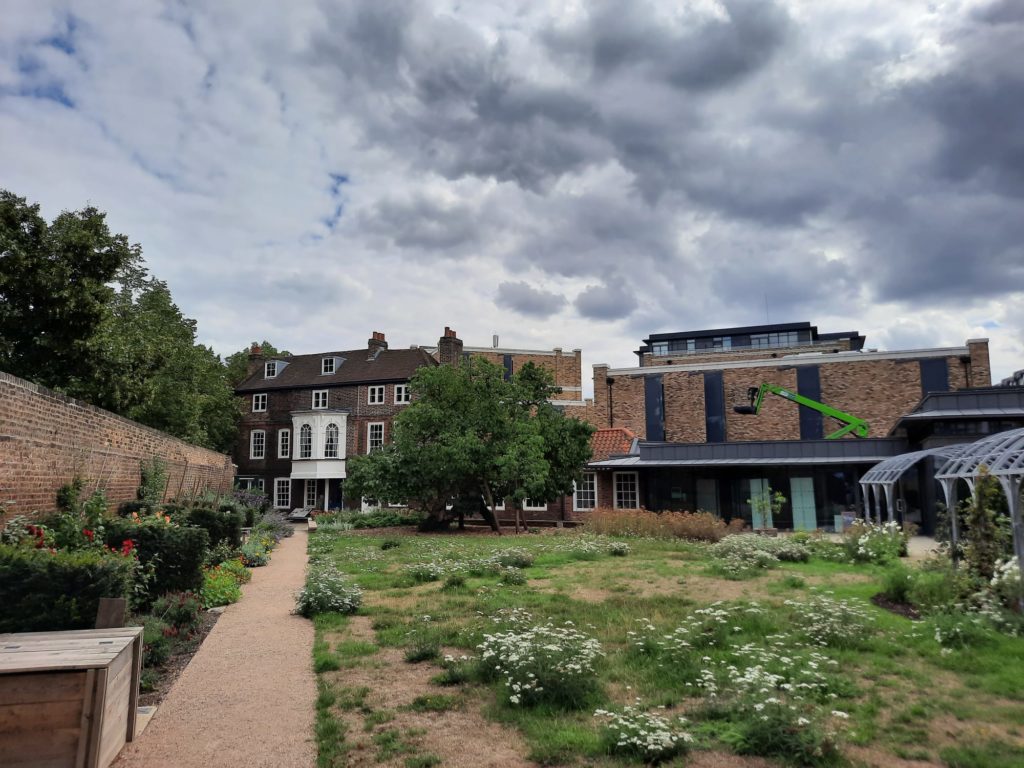
Changing London
More than most places I’ve been in London, Hogarth’s House hammers home how much the city has changed. How much it’s expanded, for one, to engulf peaceful hamlets like Chiswick. How different it looks than even the Victorian period, when there were cheerful red brick buildings all around rather than the dreary motorway of today. If I’m somewhere in central London thinking about how different the city used to be I can sort of imagine it, but thinking how horrified Hogarth would be by the changes around his nice country retreat makes it somehow more tangible.
Despite this, the folks at Hogarth’s House do a good job maintaining as much of a peaceful oasis as possible. The garden, including a mulberry tree which predates even Hogarth, is lovely. The extensions are unobtrusive, and add practical spaces around the original house. It is free to visit, pleasant and informative, and a good spot to spend an hour. Particularly if the weather is nice and you can sit in the garden.
If you’re not already in West London I would recommend combining a visit to Hogarth’s House with other activities in Chiswick, rather than a dedicated trip. Do keep it in mind though – maybe you will also start noticing it on your way to or from Heathrow!
Salterton Arts Review’s rating: 3/5

